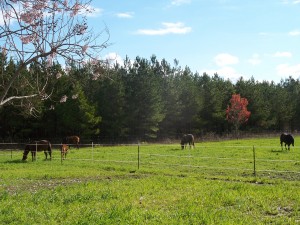Soil Sampling
go.ncsu.edu/readext?358808
en Español / em Português
El inglés es el idioma de control de esta página. En la medida en que haya algún conflicto entre la traducción al inglés y la traducción, el inglés prevalece.
Al hacer clic en el enlace de traducción se activa un servicio de traducción gratuito para convertir la página al español. Al igual que con cualquier traducción por Internet, la conversión no es sensible al contexto y puede que no traduzca el texto en su significado original. NC State Extension no garantiza la exactitud del texto traducido. Por favor, tenga en cuenta que algunas aplicaciones y/o servicios pueden no funcionar como se espera cuando se traducen.
Português
Inglês é o idioma de controle desta página. Na medida que haja algum conflito entre o texto original em Inglês e a tradução, o Inglês prevalece.
Ao clicar no link de tradução, um serviço gratuito de tradução será ativado para converter a página para o Português. Como em qualquer tradução pela internet, a conversão não é sensivel ao contexto e pode não ocorrer a tradução para o significado orginal. O serviço de Extensão da Carolina do Norte (NC State Extension) não garante a exatidão do texto traduzido. Por favor, observe que algumas funções ou serviços podem não funcionar como esperado após a tradução.
English
English is the controlling language of this page. To the extent there is any conflict between the English text and the translation, English controls.
Clicking on the translation link activates a free translation service to convert the page to Spanish. As with any Internet translation, the conversion is not context-sensitive and may not translate the text to its original meaning. NC State Extension does not guarantee the accuracy of the translated text. Please note that some applications and/or services may not function as expected when translated.
Collapse ▲by Tiffanee Boone
Getting a soil test and applying the resulting recommendations are the most important things you can do to create a healthy yard or field. The first step is to obtain a sample box and accompanying form from the Extension office at 123 Caroline St. in Rockingham during business hours. You may also borrow a soil probe from the office, or use a shovel or trowel (less accurate). The next step is to pull a soil sample from your yard, pastures, and fields. Obtain 12-15 probes worth of soil from throughout your yard or field (4-8 inches deep depending on the root area of the grass or crop), mix them together in a bag or bucket, and then fill the soil box to the line. Fill out the form and then bring the soil plus form to the plastic bin in front of our office door and we will mail it to the NC Dept. of Ag. soil lab in Raleigh for you. From May through October, the service is free, but from November through April, the cost is $4 per sample. This is because winter is their busiest time of the year for samples, so the soil lab would like to encourage everyone to mail their samples in the off-season. Results are normally accurate for 2 years, so there is no need to wait!
After the lab analyzes your soil, they will post your results on their website. You can then go to the website to see how much lime and fertilizer that you will need. If you don’t have a computer or a printer, you can call us for help and we can print or mail a copy for you. If you do have a computer and don’t understand the results, you can ask us for help. It also helps to take your report to your local farm store and they can help you find the fertilizer that your soil needs depending on what type of grass or crop you have or will plant. The further ahead you get your soil samples, the better. Most of our soils require lime, which needs around 6 months in order to break down so that it is available for your grass or crop to use.
 Lots of you are planning ahead and will be purchasing hay soon. You can borrow our forage probe if you would like to test your hay. For only $10, you can get your sample analyzed to find out how much protein, energy, and minerals are in your hay. You can then substitute feed for whatever the hay may be missing. If your hay is high in nitrates, you can find that out also and make management decisions such as limiting the amount of hay your animals get each day or not feeding pregnant animals the higher risk hay. All you need to use the forage probe is a cordless electric drill.
Lots of you are planning ahead and will be purchasing hay soon. You can borrow our forage probe if you would like to test your hay. For only $10, you can get your sample analyzed to find out how much protein, energy, and minerals are in your hay. You can then substitute feed for whatever the hay may be missing. If your hay is high in nitrates, you can find that out also and make management decisions such as limiting the amount of hay your animals get each day or not feeding pregnant animals the higher risk hay. All you need to use the forage probe is a cordless electric drill.
If you need help testing your soil or hay, we would be glad to help you. Please call our office at 910-997-8255 for assistance, or visit our website at N.C. Cooperative Extension Richmond County Center.




